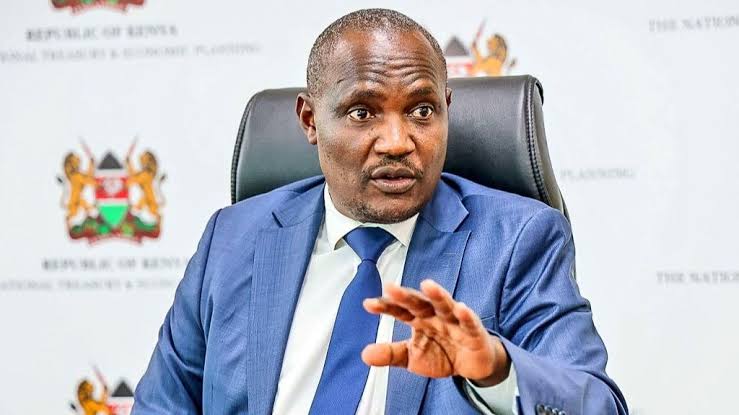

Kenya is expected to save at least Sh150 billion annually through an electronic procurement system implemented by the government starting July 1.
The Sh5 billion system, backed by both the International Monetary Fund and World Bank, aims to automate and streamline procurement processes, enhancing transparency, efficiency, and accountability while reducing opportunities for graft.
Corruption in the public sector drains the country close to Sh2 billion per day, with data from the Ethics and Anti-Corruption Commission (EACC) indicating that the country loses an average of Sh600 billion annually to the vice, 70 per cent attributed to procurement.
The World Bank has projected the system to save the country close to 0.9 per cent of GDP that is lost to corruption annually.
Last week, National Treasury CS John Mbadi said that the new e-GP system is well anchored in the law, warning that no amount of intimidation will stop the government from running the system.
“There is no going back. No amount of blackmail and intimidation by corrupt elements that have been exploiting the previous system will stop us. Most public finance managers have been trained and more are graduating weekly through virtual trainings,’’ Mbadi said.
He cautioned that no budget for the current financial year would be approved if it was not uploaded on the system.
Yesterday (Monday) was the deadline for all state agencies to upload their budgets on the e-procurement system, with counties expected to upload immediately after the Controller of Budget (CoB) clears and is placed on the Integrated Financial Management Information System (IFMIS).
At least 1,285 procurement entities and 7,637 suppliers had already signed up on the system by Friday last week, with thousands of public finance managers trained on how to use the system.
According to Mbadi, the new e-procurement system is end-to-end; it starts from budgeting to the payment stage.
In the current system, once the national budget is uploaded on the Integrated Financial Management Information System (IFMIS), the rest of the procurement is manual.
Mbadi cautioned that attempts to undermine the system are being pushed by individuals with vested interests in manual tendering processes, noting that opposition to the new system is rooted in efforts to preserve corruption loopholes.
“They want us to go back to manual so they can manipulate tenders by plucking papers,” said the CS.
He wonders why people are opposed to a system that, among other things, seeks to reduce cost and increase transparency in procurement processes and practices, improve efficiency in procurement by minimizing the procurement cycle time, maximize value for money, and foster accountability through re-engineered procedures.
He adds that the process is expected to improve the confidentiality, integrity, and authenticity of transactions between the procurement entities and the suppliers and streamline procurement procedures across the government through standardization of processes and practices.
The system has an in-built procurement management information system as a common procurement database to facilitate proper planning, monitoring, evaluation, reporting, and an electronic audit trail.
The exchequer’s circular, issued earlier this year, directed all public institutions, including ministries, state corporations, and county governments, to exclusively use the e-GP system for procurement activities by the end of the 2024/2025 financial year.
As the government talks tough on the mandatory switch to the e-procurement system, governors and members of Parliament have objected, sparking debates over transparency, accessibility, and the readiness of public entities to adopt the digital platform.
In a heated session of the National Assembly's Finance and National Planning Committee, MPs argued that the system could disadvantage small and medium enterprises (SMEs) and businesses in remote areas with limited internet access.
They insist that it could disadvantage small and medium enterprises (SMEs) and businesses in remote areas with limited internet access.
The majority say that the digital infrastructure required to support the system is not yet uniformly available across the country, particularly in rural regions.
They highlighted the risk of excluding businesses that lack the technological capacity or resources to engage with the online platform, potentially stifling economic participation.
The committee, chaired by Molo MP Kuria Kimani, also pointed out that the Treasury failed to conduct adequate stakeholder consultations before issuing the circular.
According to them, the directive was implemented hastily, without sufficient training or sensitisation for public institutions and suppliers.
They are now calling for a phased approach to the e-GP system's rollout, suggesting that the government address infrastructure gaps and provide capacity-building programmes before enforcing mandatory use.
Even so, accountability experts want the exchequer not to relent in the effort to ensure every shilling in the public purse is well utilised.
Economist Tony Watima hopes that the system will correct “tenderpreneurship”, a vice attributed to distorting the nature of the country’s money multiplier effects.
“Good service is being replaced by competition for tenders in corrupt practices, devaluing the economic growth and development turnover of government-led projects,’’ he says in a past interview with Forbes.
According to him, the thin line between public expenditure and corruption is traced to a 1967 government policy change that allowed politicians and civil servants to engage in private business.
“This convergence of motive, opportunity and unethical orientation monopolised power in the absence of accountability.”
EACC Chief Executive Officer Abdi Mohamud said most corruption cases under investigation by the commission stem from irregular procurement deals, a problem the new eGP system is set to curb.
The agency has secured full access to the government's new e-Government Procurement (eGP) system in what it describes as a game changer in the fight against procurement-related corruption.













